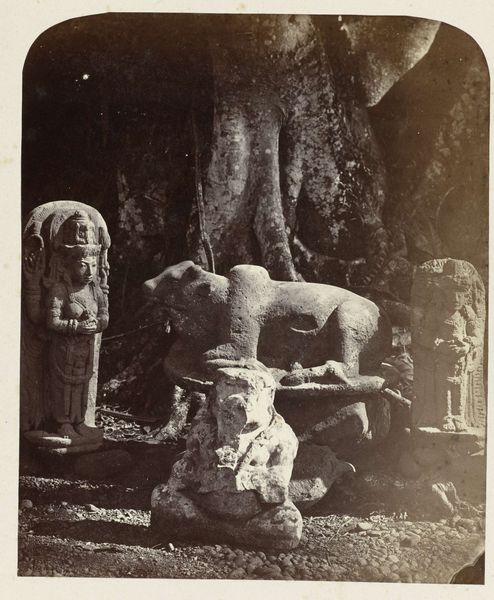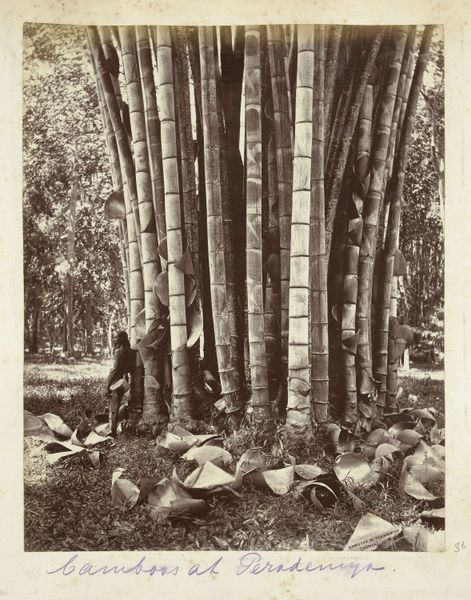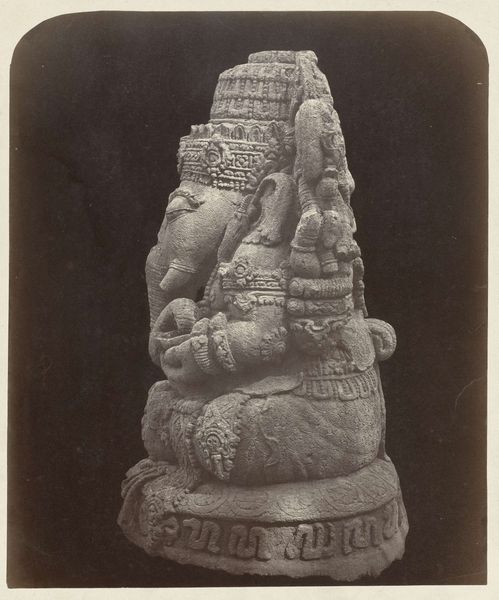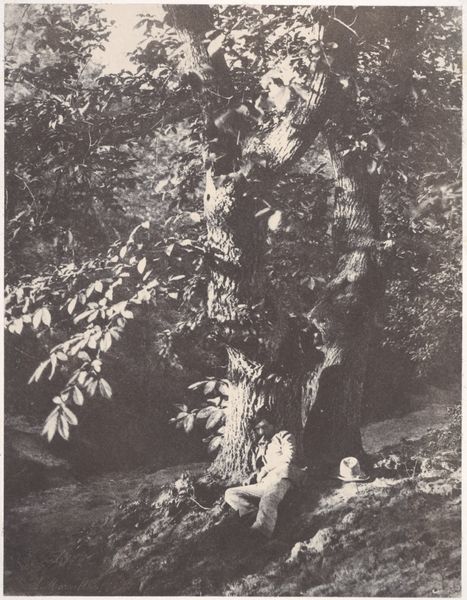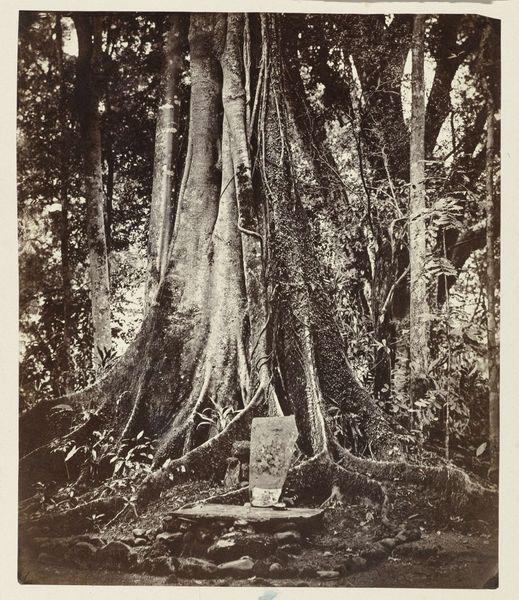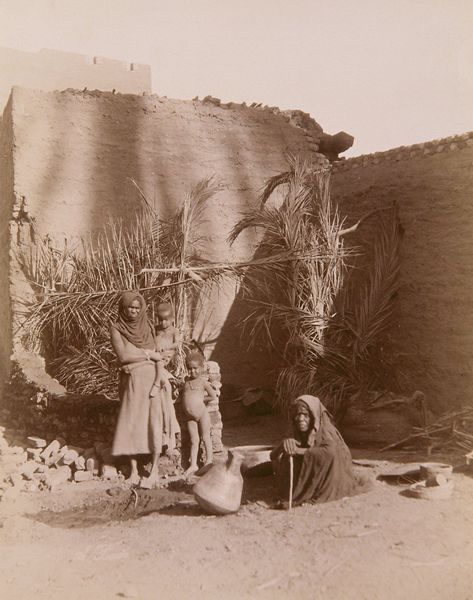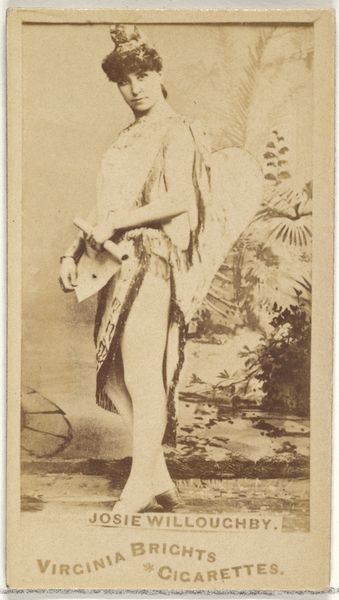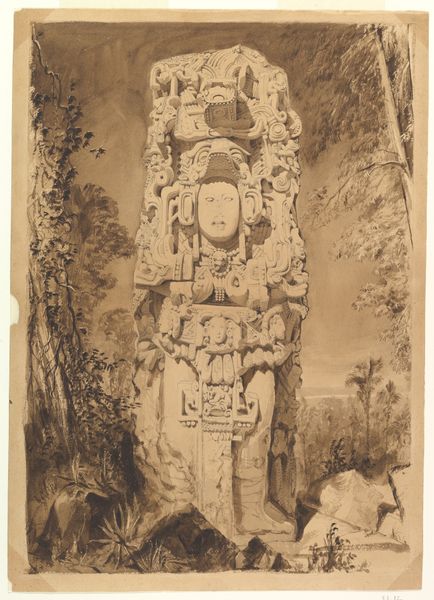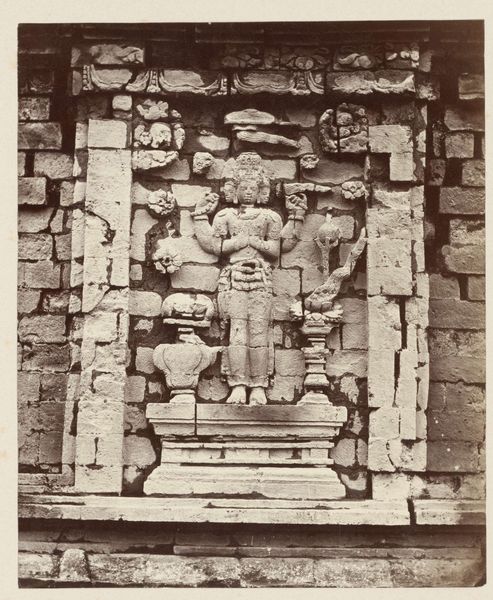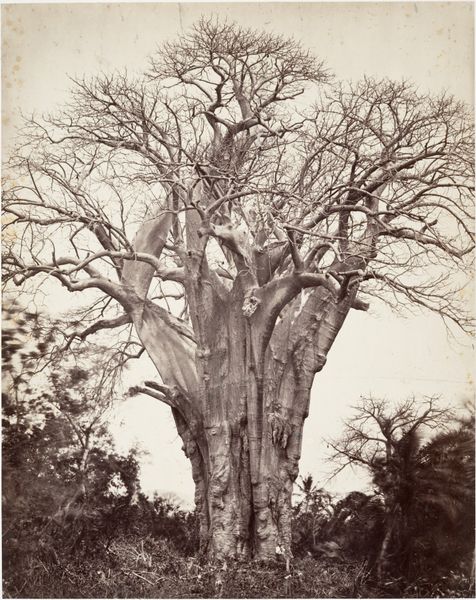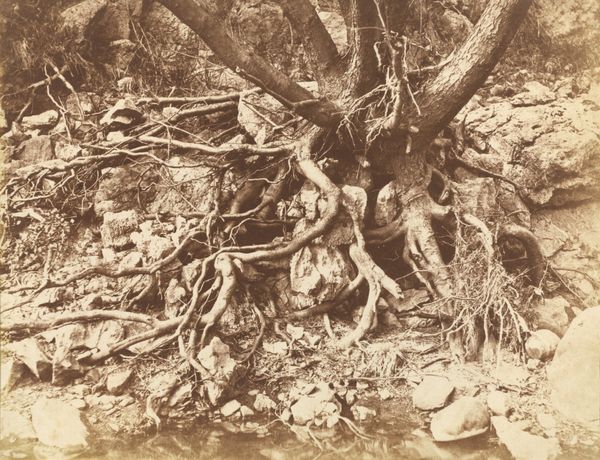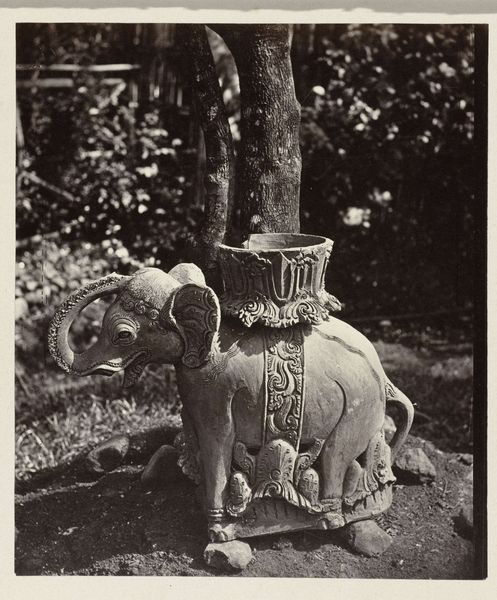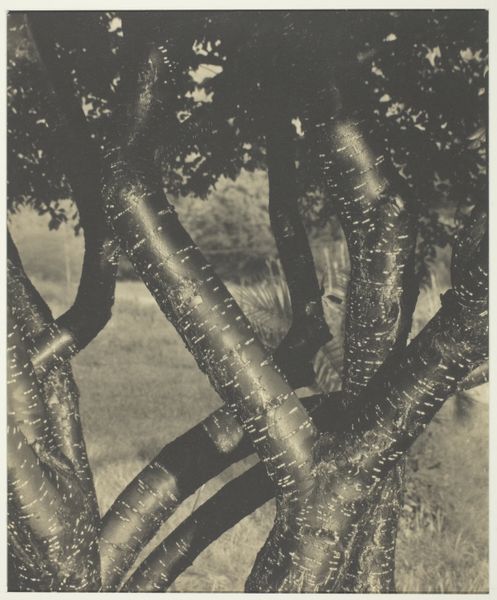
Deification stele with features of Harihara in the residential gardens at Kediri, Kediri district, East Java province, 14th century, Indonesia. Possibly 1866 - 1867
0:00
0:00
photography, sculpture, site-specific
#
portrait
#
sculpture
#
asian-art
#
photography
#
ancient-mediterranean
#
sculpture
#
site-specific
Dimensions: height 275 mm, width 205 mm
Copyright: Rijks Museum: Open Domain
Editor: This photograph by Isidore Kinsbergen, potentially taken in the late 1860s, showcases a stele with features of Harihara in Kediri, Indonesia. The sculpture, cradled within the roots of an enormous tree, almost feels as though it's being birthed by nature. What draws your attention when you look at this image? Curator: Immediately, the photograph brings to mind the interplay between nature and culture, between the raw material of the earth and the human labour that shaped the Harihara stele. Considering that this stele appears to be photographed in situ, what do you make of its relationship to the site? Editor: It blurs the lines between sculpture and site-specific art. It makes me wonder, was the tree already there, and the sculpture intentionally placed to integrate with it? Or perhaps even carved *into* the tree? The choice of material would then become crucial. Curator: Precisely. The labor involved in quarrying, transporting, and carving such a stele would have been immense. And situating it like this, seemingly absorbed by the very landscape it’s meant to stand apart from, subverts our understanding of both the artwork's production and its consumption. How does that relate to notions of “high art”? Editor: It challenges that completely. Instead of a detached, elevated object, it's deeply intertwined with its environment and possibly local spiritual practices, erasing boundaries we often impose. The skill involved in sculpting something that also feels so natural almost democratizes the concept of art. Curator: The photography itself is key. Kinsbergen is not just documenting; he's framing a relationship between materiality, labor, and the landscape itself, opening dialogues about access and contextual significance that remain relevant today. What started as documentary photography of cultural artifacts, became evidence of cultural history being captured, in the present tense. Editor: I hadn't considered the photographic process as part of that material chain, but of course, it adds another layer of interpretation and labor! That changes how I see the image significantly. Curator: Indeed. This piece now stands out to me as an excellent point for expanding discussions about traditional assumptions tied to “Art” and the accessibility to view that history.
Comments
No comments
Be the first to comment and join the conversation on the ultimate creative platform.
